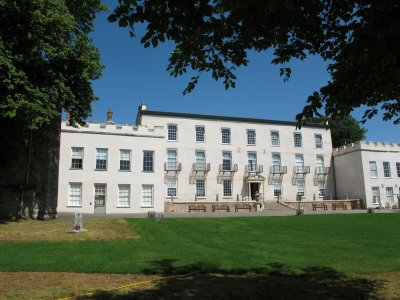Torre Abbey Museum / News / Wed 24 Jul 2013
Abbey reopens - 27 July 2013

Torre Abbey Historic House Reborn
Torre Abbey Historic House in Torquay is reopening after an extensive restoration programme on Saturday 27 July.
Following the successful delivery of phase I, Torbay Development Agency was commissioned to oversee the next phase which restored the south range elements and improved the interpretation inside the building.
From state-of-the-art exhibitions and interactive galleries which will amaze and intrigue to one of the largest fine art collections in the South West and stunning gardens - there really is something for everyone.
Torbay’s Mayor Gordon Oliver said: “Torre Abbey Historic House is a Jewel in the Bay’s Crown and it is wonderful to see it reopening after careful restoration. This beautiful building has been brought to life with state of the art technology depicting local history through the ages.
“Since its foundation in 1196, Torre Abbey has witnessed, survived and even played a role in some epic moments of history. It is one of the best buildings in the country to tell the story of 800 years of Catholicism between 1196 and 1930.
“The Abbey has something to offer everyone and it is wonderful to see how the past has been interpreted in modern ways.”
TDA Chief Executive, Steve Parrock, said: “The Abbey is a Scheduled Ancient Monument of national importance and is steeped in history. It has two Grade I listed buildings, four Grade II listed buildings, an historic garden and Palm House.
“From the medieval cloisters to the fascinating life of the Victorian Carys, the Abbey has been a centre of religious and artistic expression and hospitality for hundreds of years. More recently it has played a role in two Olympic Games.
“The restoration of these wonderful buildings has also made it possible to showcase these, and other, important milestones in local history using the best of contemporary museum interpretation.”
House family trails and children’s garden discovery backpacks help bring the Abbey to life and visitors of all ages can discover an array of hidden mysteries through personalised tours available in booklets or apps.
With its fine gatehouse, guest hall, abbot’s tower and remarkable undercrofts, the Abbey is the best preserved example of a medieval monastery in Devon and Cornwall. It also has one of the five most complete early medieval tithe barns in England.
There have been a number of famous visitors to the Abbey. These include Vice-Admiral Lord Nelson (1801), Caroline, Princess of Wales (1809) and Queen Elizabeth II, who has visited on a number of occasions.
The Spanish Barn, adjacent to the house, is so named because it played an important role housing 397 prisoners from the Spanish Armada. The prisoners were taken from the only galleon captured during the conflict - the Nuestra Senora del Rosario.
With a wealth of exotic and exciting plants, the gardens are a tranquil haven of beauty and pleasure, the perfect setting in which to relax, stroll or picnic. Exuberant plantings of herbaceous perennials, roses and dahlias sit in the formal 19th century landscape around the Abbey ruins.
The heated glasshouses, containing tropical and desert plants, are a treat for the senses whatever the season. A new medieval children’s garden is garden within a garden and has been lovingly created to entice people, of all ages, into the fascinating world of medieval plants and their uses. Turf seats, willow tunnels, sensory planting and a fountain offer the opportunity to explore, look, touch, and taste.
The Spanish Barn, the main House and Palm House are all currently used for functions, such as weddings and corporate hospitality.
The restoration project has also created learning spaces, including a new educational suite built in the south-east wing, providing opportunities for students of all ages to get involved and explore the history of the site.
